Natural "lighthouse"
Nui Chua is located in the south of My Son valley (Duy Phu commune, Duy Xuyen district, Quang Nam province ), standing out with its strange and unique shape. In the past, Nui Chua was called Mahaparvata, the symbol of the Amaravati state of the Champa kingdom. The name Mahaparvata was written on the first stele of My Son in the 4th century under the Bhadravarman dynasty. It is likened to the sacred mountain Meru in Indian mythology, the place where gods reside.
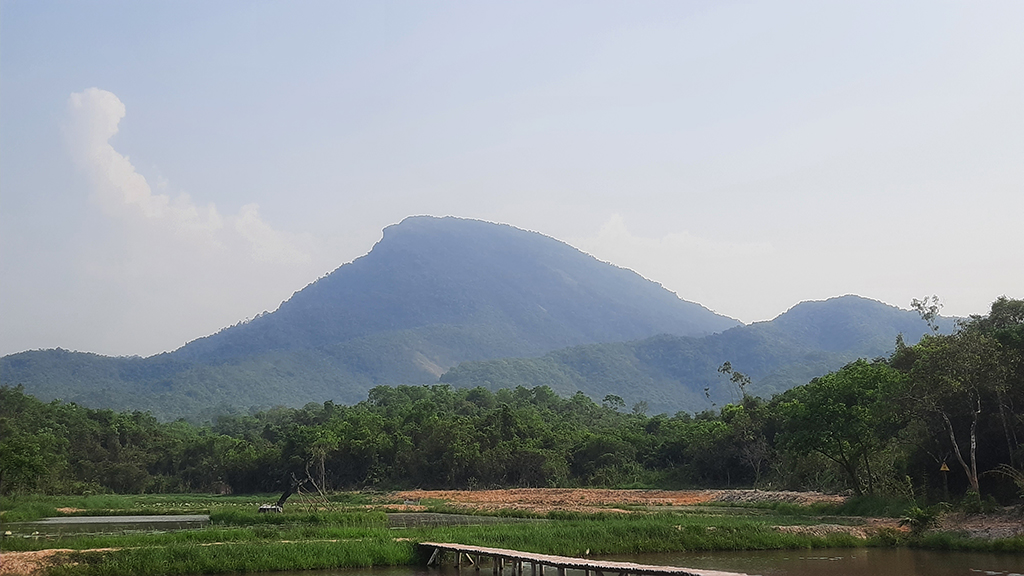
God Mountain, where many mysterious stories are passed down
From the mainland to the sea, within the territory of the Amaravati-Champa kingdom (present-day Quang Nam), one can easily see the Chua mountain. What is special is that, if viewed from the My Son valley, the Chua mountain peak looks like a giant Garuda bird spreading its wings according to Cham legend.
Mr. Le Van Minh, Head of the Conservation Department (My Son Cultural Heritage Management Board), has been to the top of Chua Mountain many times to survey and explore . From the sacred valley to this sacred mountain, every place is associated with a mysterious story that has been passed down from generation to generation by the people.
According to Mr. Minh, this sacred mountain is called Chua Mountain because it is larger and higher than all the surrounding mountains. From the top of Chua Mountain, looking in a straight line, you will see My Son Temple, Tra Kieu Capital, Hoi An Ancient Town and Cu Lao Cham Island. All 5 famous landmarks are located on a straight line. "More precisely, it is a straight axis connecting the end point, Cu Lao Cham, far offshore, to the beginning point, Chua Mountain. This proves that the ancient Champa people, before laying the foundation to build the My Son Temple complex, carefully considered feng shui," said Mr. Minh.
In Champa stele, the sacred mountain Mahaparvata symbolizes the god Siva. The Thu Bon River (or Mahanadi) is the sacred river that symbolizes the goddess Ganga (wife of the god Shiva). The peak of Chua Mountain is considered by the Champa people as a natural "lighthouse" to see coordinates every time they go to sea. In addition, foreign merchant ships traveling on the East Sea, if they want to stop at the old land of Amaravati to get fresh water or dock at Cua Dai port, use this mountain peak as a landmark to determine their location.
"From Cu Lao Cham, Chua Mountain looks like a giant bamboo shoot. In the opposite direction, Cu Lao Cham is considered a screen of My Son. The Cham people considered this mountain as a lighthouse, which is not wrong. Because when standing in Cu Lao Cham, you can see the top of this mountain," Mr. Minh explained.
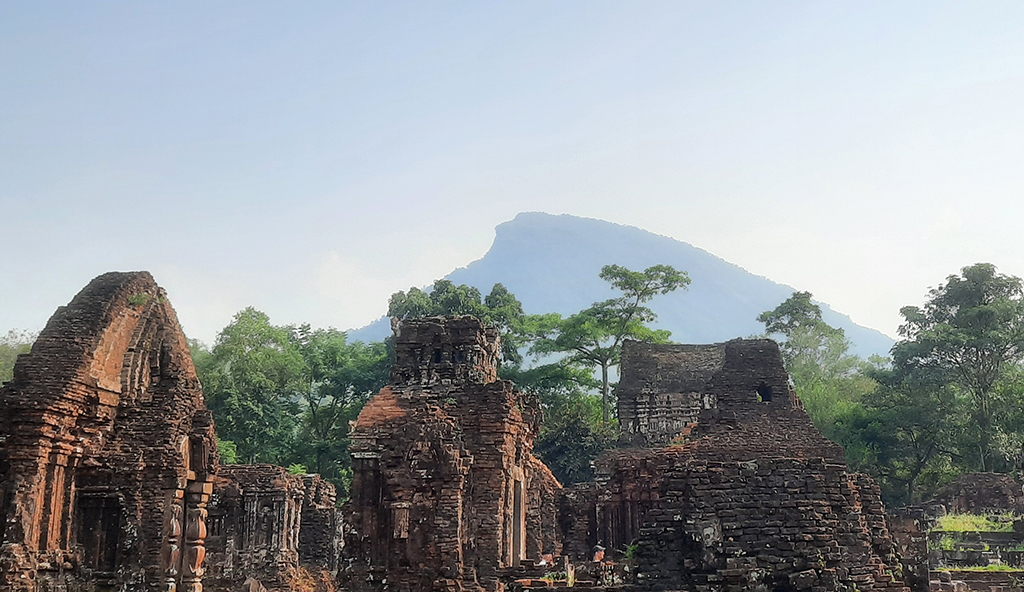
My Son Sanctuary, behind is the peak of Chua Mountain
Many thrilling stories
The elders say that on the night before the annual Ba Thu Bon festival (12th day of the 2nd lunar month), there is often a spark of fire flying from the top of Chua Mountain to the Thu Bon Palace (in Duy Tan Commune, Duy Xuyen District), about 1 km away from the top of the mountain as the crow flies. In addition, there were five years when the villagers were starving, a divine cow from the divine valley brought a lot of gold and ran out to help the people…
Around Chua Mountain, local people still tell each other the story of the Chinese governor Cao Bien who once rode a kite to the top of the mountain to suppress the evil spirits because he was worried that the terrain of Quang Nam would give birth to heroes. Many people also describe that on the protruding vertical cliff there is a bright red mark in the shape of a circle, with a square in the middle... But according to Mr. Le Van Minh, through a flycam survey, no trace was found. "In fact, the mark that people tell each other is just a trace of rainwater flowing out from the crevices of the rocks. Maybe this is just a story that people made up," Mr. Minh commented.
In the past, the elders also said that halfway up Chua Mountain there was a Lady Garden with many kinds of fruit trees, along with fragrant flowers and strange grasses. Lady Garden was believed to be where the Cham people planted fruit trees to offer to the gods. Anyone who strayed into that garden, if they picked the fruit to eat, had to leave the seeds behind, and could not pick them and take them home.
If he returns and tells others what he saw, he will be silenced (!). The story of the hunter is still being told. In the past, because he was busy chasing his prey, he got lost on Chua Mountain. In the afternoon, when he was hungry and thirsty, he came across a fruit garden and a cool, clear lake. After eating and drinking his fill, the hunter found his way back and told the story to the villagers. A few days later, the hunter became speechless and fell ill for 3 months and 10 days before passing away. According to the villagers' explanation, this hunter was punished by the owner of the garden for bringing the seeds of Chua Mountain's fruit trees down the mountain with him. "Currently, through surveys, we see that the area considered to be Ba Garden still has very few fruit trees. Maybe due to the natural "purification" process, the forest trees are stronger and have overwhelmed all these fruit trees," Mr. Minh shared.
According to legend, people used to go to Chua Mountain to harvest trees and bring them home, but because of the difficult roads, they stayed for 2-3 days and then encountered a disaster. "These are all just spiritual stories passed down by word of mouth, and nothing has been confirmed yet," said Mr. Minh. (to be continued)
Source: https://thanhnien.vn/nhung-ngon-nui-thieng-huyen-bi-nui-chua-185240917153735901.htm





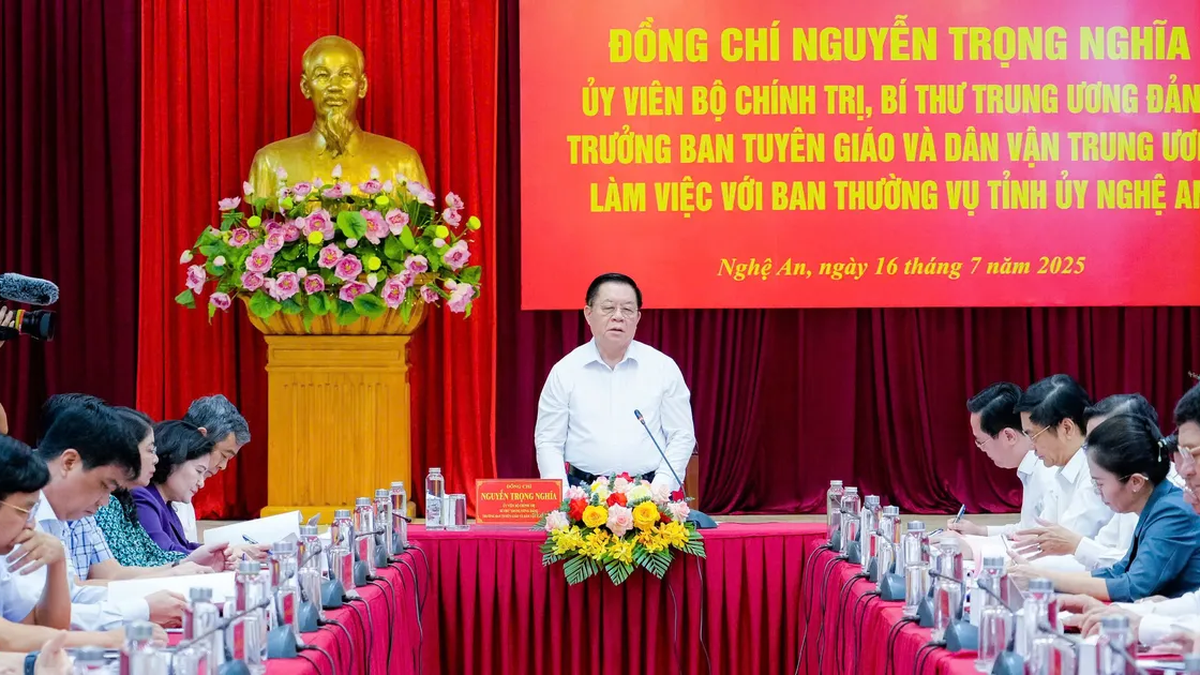
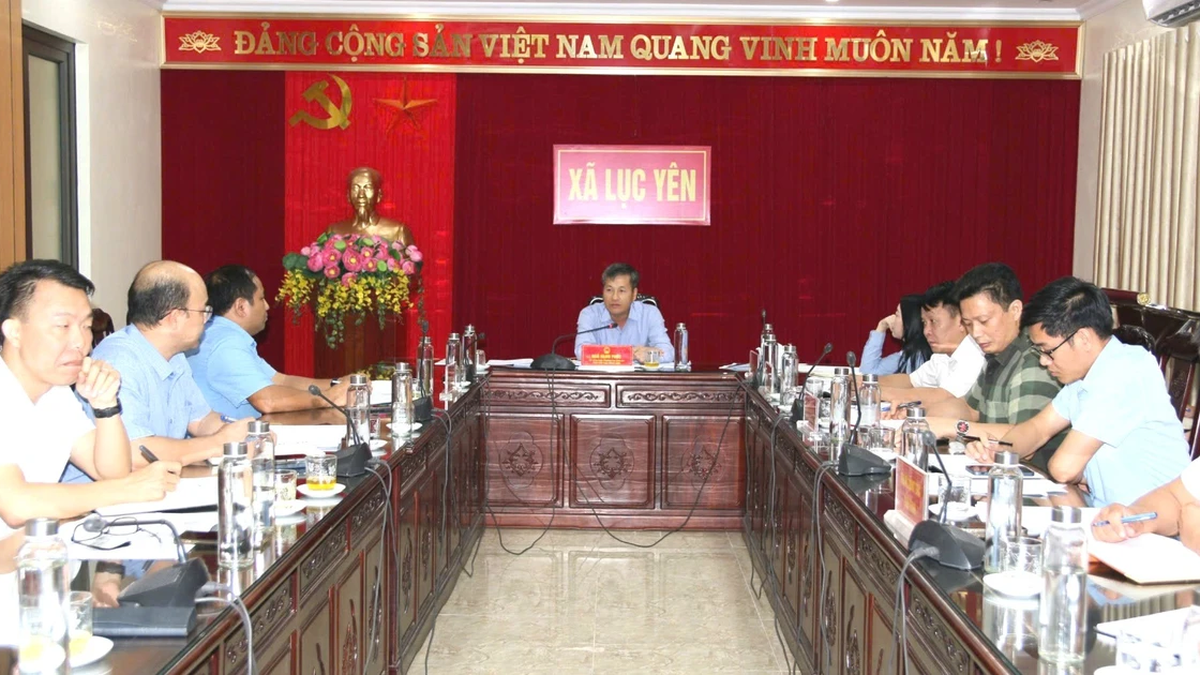
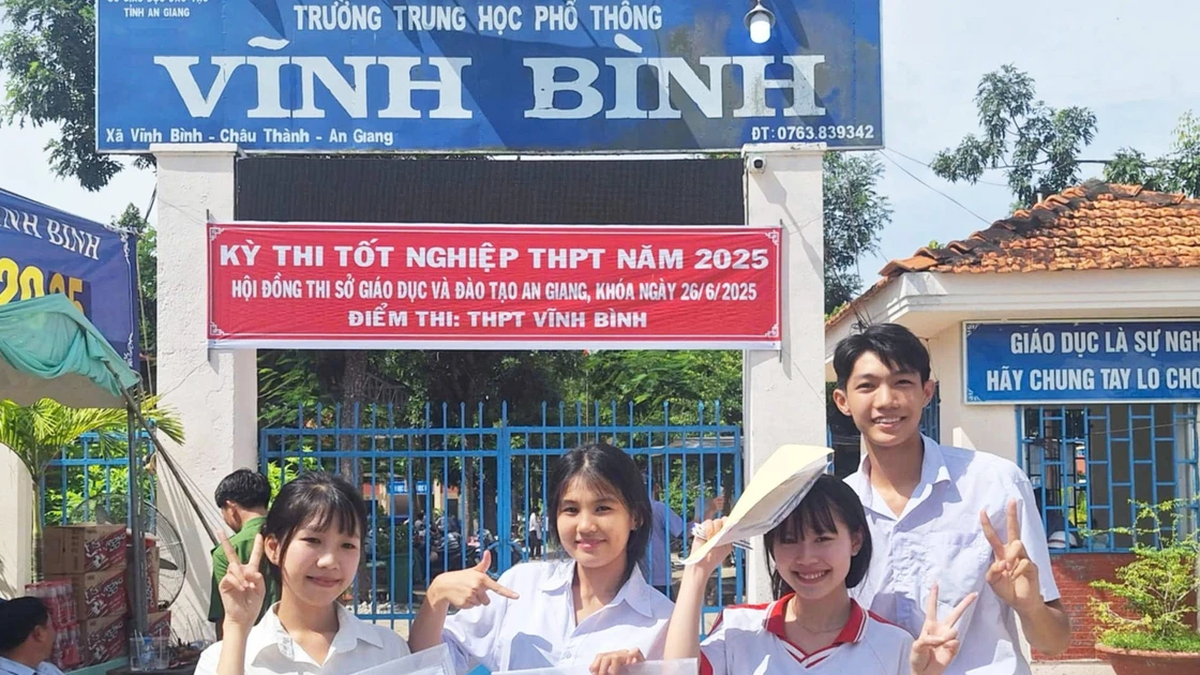
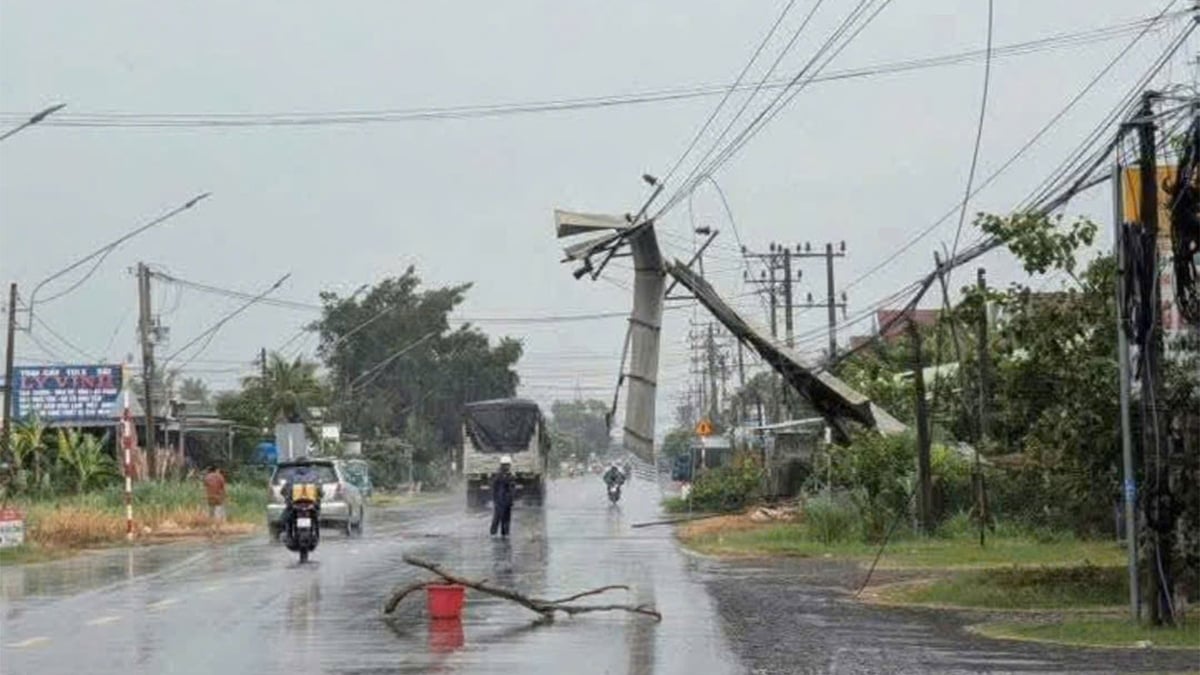
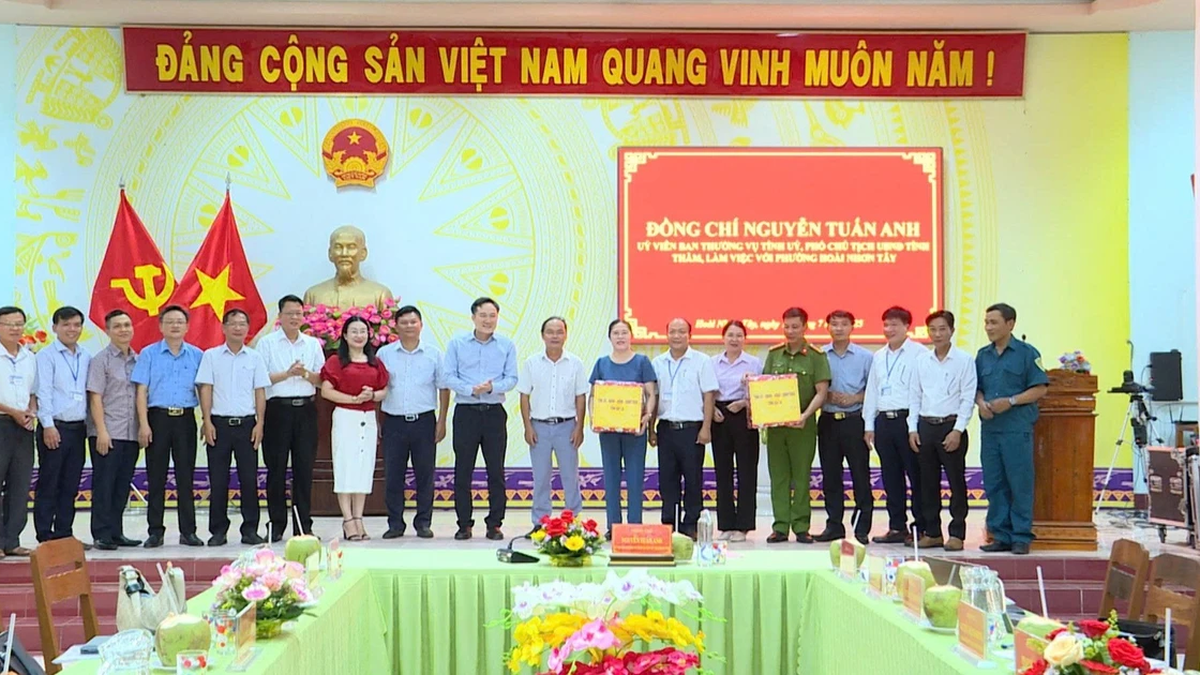
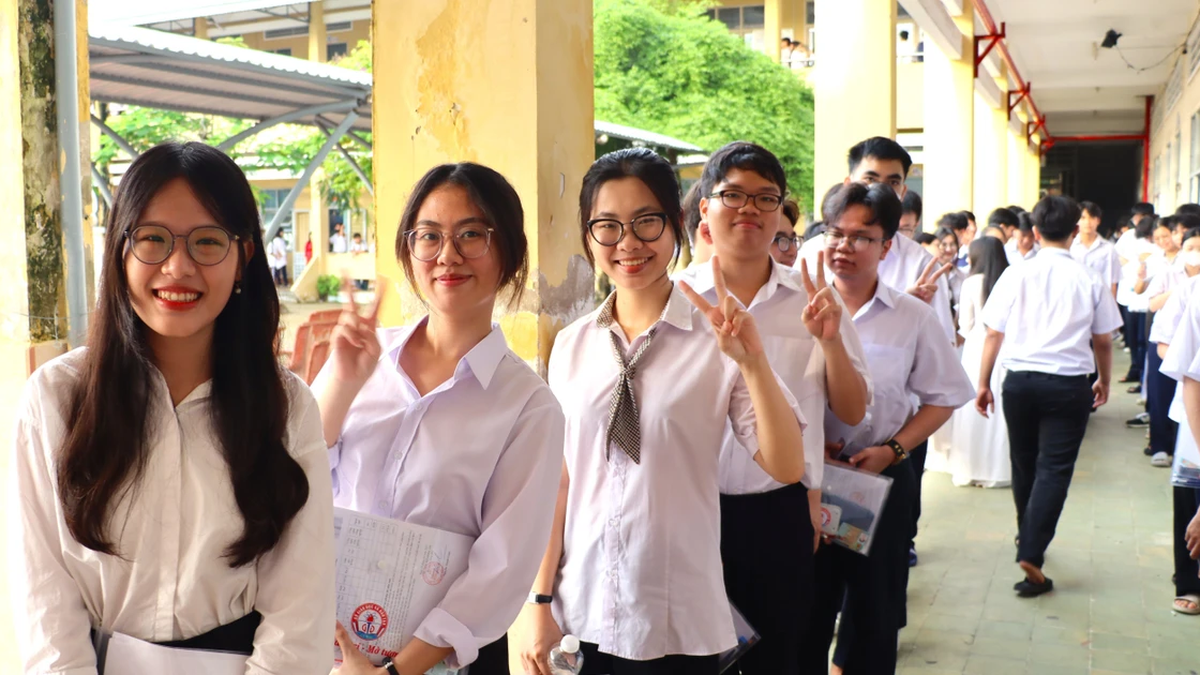
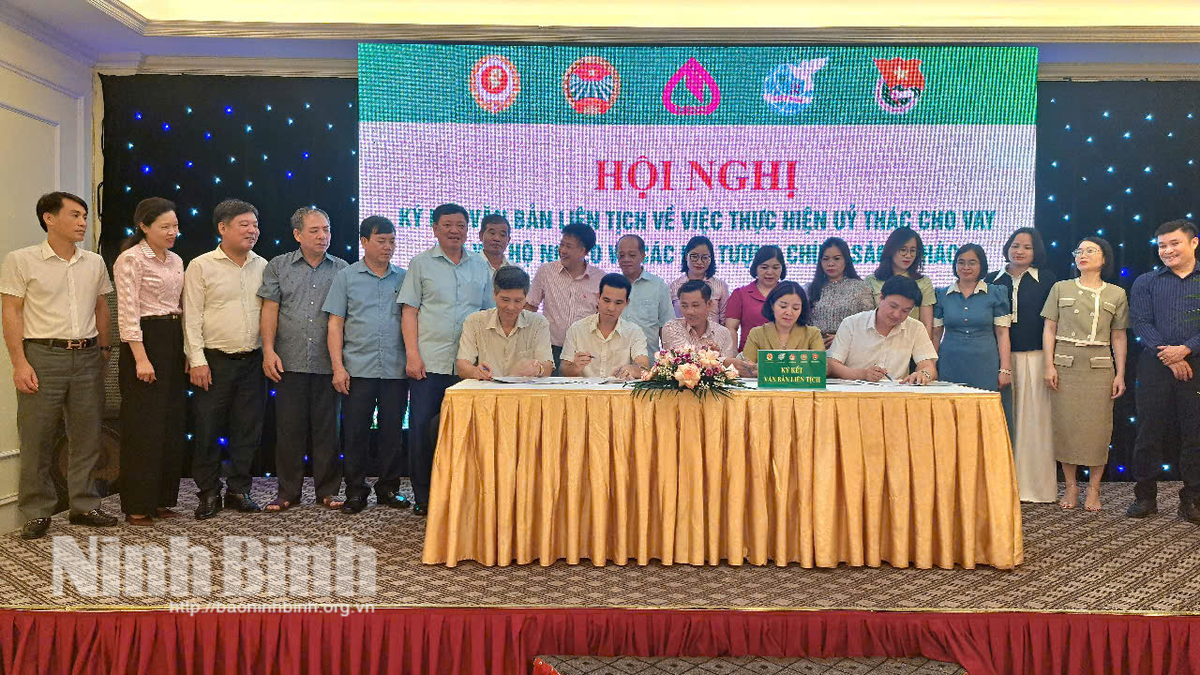








































![[Maritime News] More than 80% of global container shipping capacity is in the hands of MSC and major shipping alliances](https://vphoto.vietnam.vn/thumb/402x226/vietnam/resource/IMAGE/2025/7/16/6b4d586c984b4cbf8c5680352b9eaeb0)










































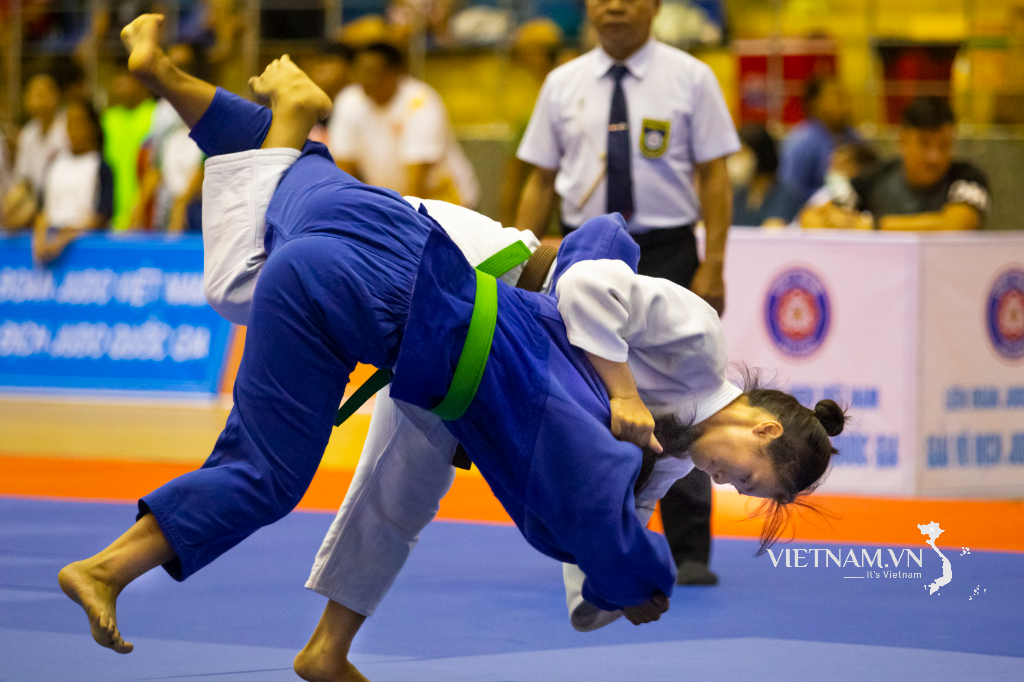


Comment (0)